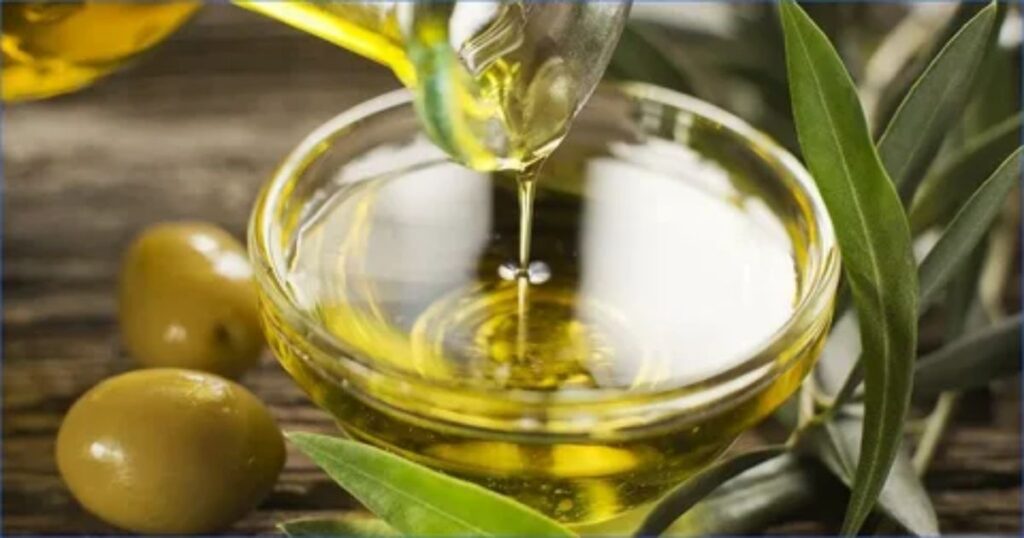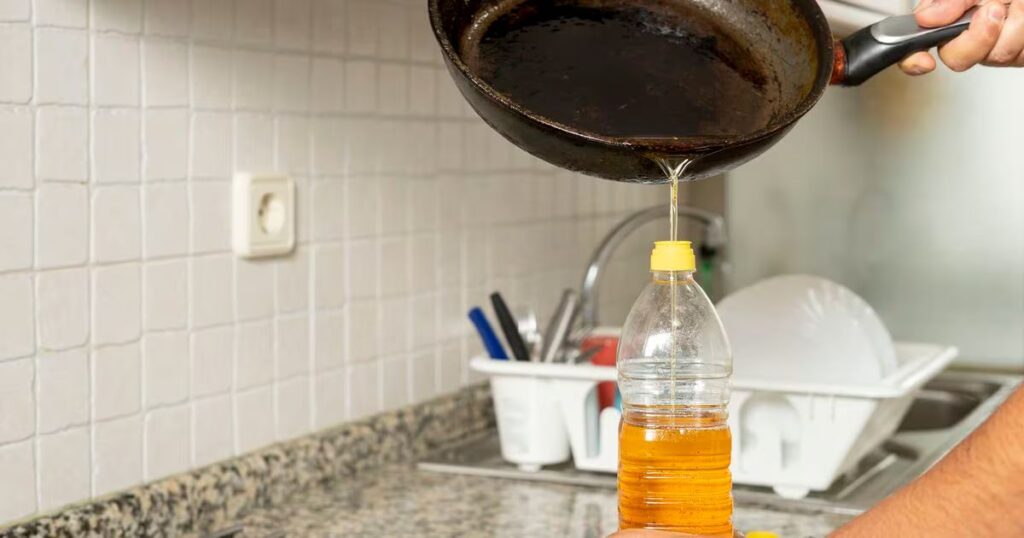Disposing of cooking oil properly involves cooling it, pouring it into a sealed, non-recyclable container, and discarding it with regular trash. Alternatively, reuse the oil or take it to a recycling center. Avoid pouring oil down drains to prevent plumbing issues and environmental harm.
Proper disposal of cooking oil involves cooling the oil, placing it in a sealed, non-recyclable container, and discarding it with regular trash. Alternatively, it can be reused or taken to a recycling center for processing into biodiesel. It’s crucial to avoid pouring oil down drains to prevent plumbing clogs and environmental damage.
Pouring cooking oil down the drain can lead to serious plumbing issues and environmental harm. Learn how to dispose of it properly and make a positive impact on your home and the planet.
Cooling the Oil
Cooling the oil after cooking is a crucial step in the proper disposal process. Immediately handling hot oil can be dangerous and lead to accidents, so it’s essential to allow it to cool down safely. To begin, remove the pot or pan from the heat source and set it aside in a safe area away from any flammable materials. This can take anywhere from a few minutes to an hour, depending on the quantity and initial temperature of the oil.
During the cooling period, ensure that the container holding the oil is stable and placed on a heat-resistant surface. Avoid transferring hot oil to another container right away, as this can cause spills or burns. If you need to speed up the cooling process, you can place the container in a larger bowl filled with ice water, but be cautious to avoid any water splashing into the oil, which can cause dangerous splattering.
Containing the Oil

Containing used cooking oil properly is crucial for both environmental protection and household safety. Once the oil has cooled after cooking, it should be transferred into a suitable, non-recyclable container. Containers such as empty milk cartons, plastic bottles, or metal cans are ideal. It’s important to ensure the container is clean and dry before pouring the oil in, to prevent any contamination or spillage.
Seal the container tightly with its lid or an airtight cover to avoid leaks. This step is essential to prevent oil from seeping out, which could create a mess or attract pests. Labeling the container as “used cooking oil” can also be helpful, especially if it will be stored for a while before disposal.
For those looking to be more eco-friendly, consider reusing the oil if it’s not overly degraded or taking it to a local recycling center. Some centers accept cooking oil for conversion into biodiesel or other useful products.
Reusing and Recycling Options
Reusing and recycling cooking oil are environmentally friendly options that help reduce waste and support sustainable practices. Reusing oil can be simple and effective: after frying or cooking, strain the oil through a fine mesh sieve or cheesecloth to remove food particles, and store it in an airtight container for future use.
This oil can be reused several times, depending on the type and its condition. However, it’s important to monitor the oil for any signs of rancidity or a burnt smell, indicating it’s time to discard it. Recycling cooking oil is another excellent option. Many communities have recycling programs that accept used cooking oil, which can be processed into biodiesel. Biodiesel is a renewable energy source that burns cleaner than fossil fuels, reducing greenhouse gas emissions.
Additionally, some companies convert used cooking oil into animal feed, soap, and other products, promoting a circular economy. By reusing and recycling cooking oil, you not only extend its utility but also contribute to reducing environmental impact and promoting sustainability.
Handling Small Amounts

Handling small amounts of cooking oil requires careful attention to ensure proper disposal without harming the environment or plumbing systems. For minimal quantities, start by letting the oil cool completely. Once cooled, use paper towels, newspapers, or other absorbent materials to soak up the oil. This method is particularly effective for small spills or residues left in pans after cooking. After soaking up the oil, place the used absorbent materials into a sealed, non-recyclable bag and dispose of it in the regular trash.
For slightly larger amounts that are still considered small, such as the oil left after frying a single batch of food, consider using a jar or a similar container to store the oil temporarily. Make sure the container is non-recyclable and has a secure lid. Once filled, seal the container tightly and dispose of it in your household garbage.
Avoiding Environmental Damage
Avoiding environmental damage from cooking oil disposal is crucial for maintaining healthy ecosystems and preventing infrastructure problems. When cooking oil is improperly poured down the drain, it can solidify and cause significant clogs in household plumbing and municipal sewer systems. This can lead to costly repairs and potential sewage overflows, which are harmful to the environment and public health.
Moreover, when cooking oil enters waterways, it can create severe ecological issues. Oil forms a film on water surfaces, blocking oxygen exchange and harming aquatic life. This layer can also attract other pollutants, exacerbating water contamination and impacting fish, birds, and other wildlife.
To prevent these issues, always let the oil cool and transfer it into a sealable, non-recyclable container before disposing of it in the trash. For environmentally conscious options, consider taking used oil to recycling centers where it can be converted into biodiesel, a cleaner-burning alternative fuel.
FAQ’S
What to do with oil after deep frying?
seal your cooking oil container and dispose of it in the garbage.
Can cooking oil go in food waste bin?
Small amounts of cooking oil, fats, plate scrapings of fatty food can be added to your food waste recycling service, if you have one.
How to solidify cooking oil?
Freezing is the quickest and most convenient way to harden cooking oil.
Can you pour cooking oil in the sink?
You should never pour used cooking oil down any drain, including sinks and toilets.
Conclusion
In conclusion, proper disposal of cooking oil is essential to prevent environmental damage and safeguard public health. By following simple steps such as cooling and containing the oil before disposal, we can mitigate the risk of clogged pipes, sewage overflows, and water contamination. Additionally, considering alternative options like recycling or reusing cooking oil promotes sustainability and reduces our carbon footprint. Together, these efforts contribute to a cleaner, healthier environment for ourselves and future generations. Let’s commit to responsible oil disposal practices, prioritizing the well-being of our communities and ecosystems.

